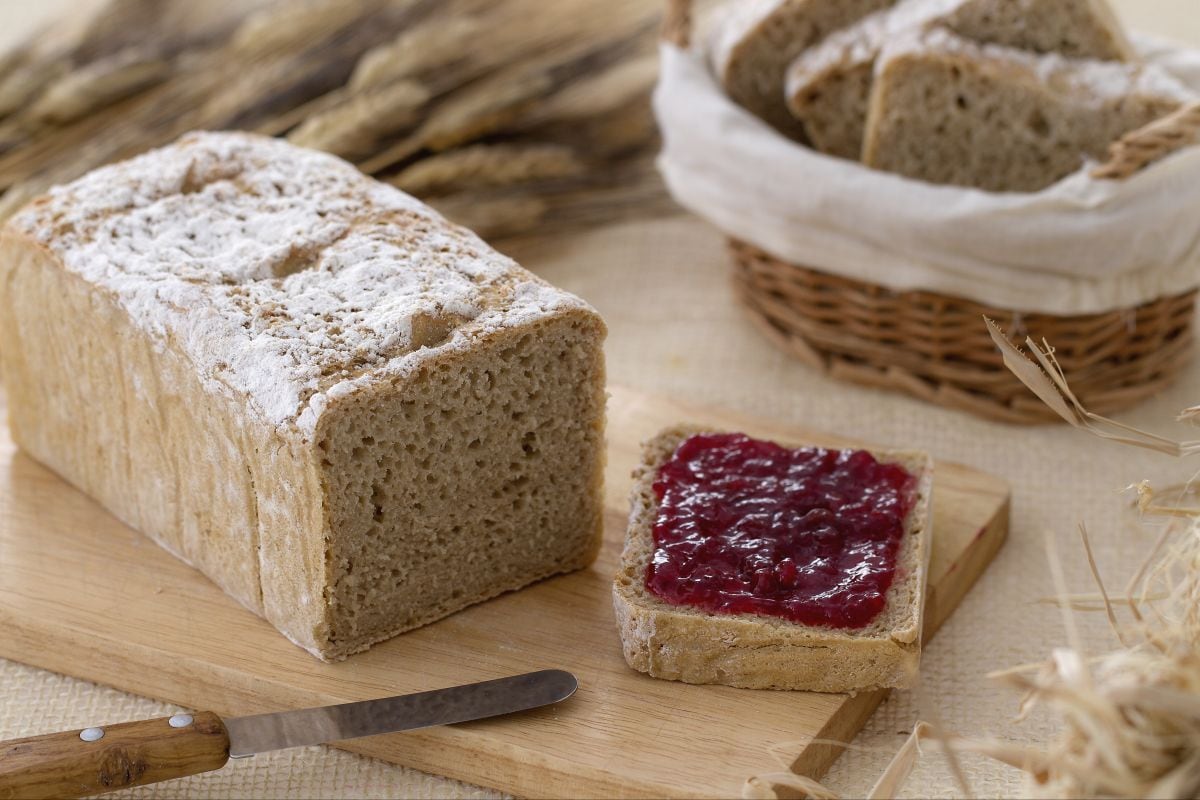Fig Crostini
- Very easy
- 20 min
- Kcal 146

Pane di segale is such a staple in Northern European kitchens. It brings this rustic, hearty feel to meals. Really, it’s all about mixing farina di segale—a type of rye flour that's super popular in colder climates—with Manitoba flour. This combo gives the bread a moist yet slightly dense texture. It’s great because it stays fresh way longer than regular wheat bread, and you know, it doesn’t dry out as quickly. The key? Letting it rise for plenty of time. That way you get that rich, fragrant aroma and a soft interior. Slicing into a warm loaf? Seriously satisfying.
Whether you’re going for the classic pane di segale or trying out pane di segale integrale, this bread works great for breakfast or as a snack. People in Northern Europe, they get really creative with their ricetta pane di segale. Adding seeds or giving the loaves unique shapes? So fun. Toss in some sunflower or pumpkin seeds for a little crunchy surprise in each bite.
Thing is, what makes pane di segale fatto in casa special is its versatility—it’s amazing in all kinds of meals. Spread some jam on it for a sweet start to your day, or load it up with savory toppings to make crostini for a delicious afternoon treat. And the aroma? Wow. This bread really encourages creativity and patience; the long rise time pays off when you’re greeted by that warm, earthy scent from the oven. If you’re curious about come fare il pane di segale, remember: let the impasto pane di segale fully develop its flavor and texture.
It’s a rewarding project, for sure, leaving you with a loaf that feels both comforting and delightful. Don’t hesitate to put your own spin on it and enjoy every bite of this traditional northern bread. Whether you're a seasoned baker or just starting out, it's sure to become a favorite in your home. Pretty simple.
You might also like:

To prepare rye bread, start by pouring the yeast (alternatively, you can use 12 g of fresh brewer's yeast) into a small bowl with half of the lukewarm water 1. Stir to dissolve the yeast, then add the teaspoon of malt (or sugar) 2. Mix to combine the malt 3.

Then, in a bowl, sift the manitoba flour (alternatively, you can use all-purpose flour) and add the rye flour 4. Mix the two flours with a spatula to combine them 5. Pour the yeast and malt into the bowl with the flours 6 and mix.

Then dissolve the salt in the remaining lukewarm water 7, stir, and gradually pour the water over the dough 8, stirring as you go to absorb it 9.

Continue mixing to create a more compact mixture 10. Then let it rise in the bowl for at least 1 hour at room temperature, covered with plastic wrap. After the indicated time, it will have doubled in volume and will have bubbles 11. At this point, you can flour a work surface and start handling the dough: you should create a rather thick rectangular shape and fold the dough over itself 12.

Then continue to create folds starting from the shorter side 13 towards the inside and doing the same from the other side 14. Flatten the dough again and start with the folds, this time folding the edges of the longer side towards the center 15.

Make some indentations with your fingers on the dough 16 and create more folds (17-18). Finally, shape the dough into a rectangular shape.

Line a 10x4 inch loaf pan with parchment paper: this will allow you to easily remove the bread once baked. Place the dough inside and cover it with plastic wrap 19; let it rise for about 3 hours at room temperature or until it reaches the edge of the pan 20. At this point, bake it in a static oven at 428°F for 35 minutes (392°F for about 30 minutes if using a convection oven). Then remove it from the oven 21, let it cool slightly, and serve your rye bread sliced to accompany lunches and dinners or to enjoy at breakfast!